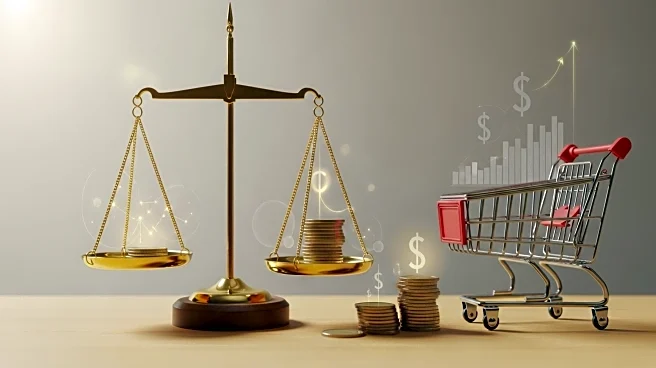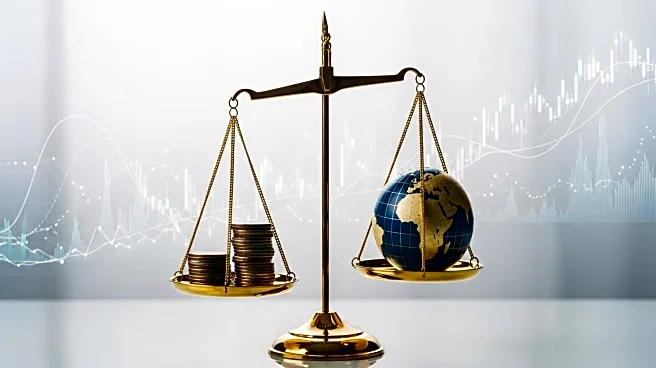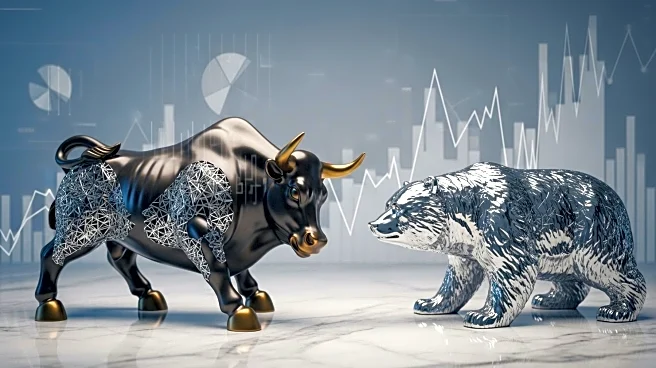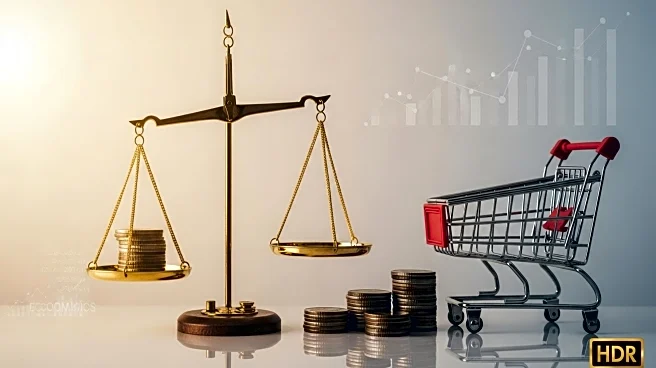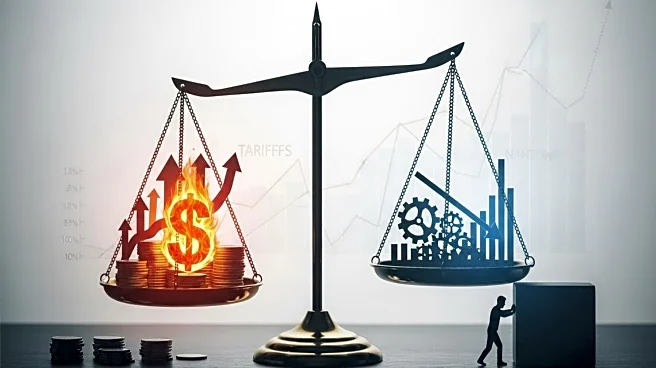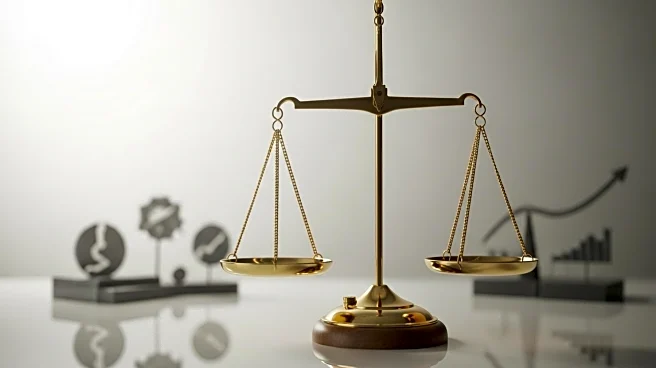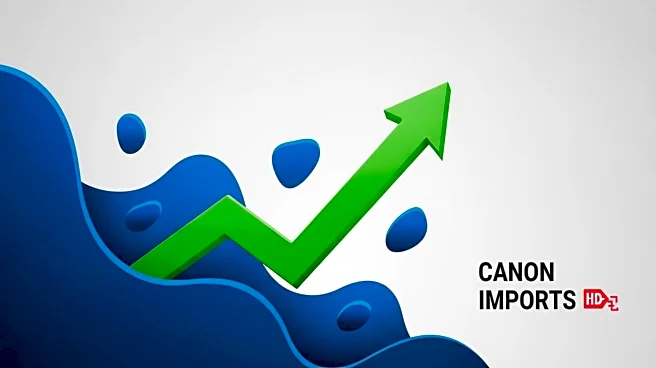What's Happening?
The Commerce Department released data indicating that U.S. consumer spending rose by 0.5% in July, despite elevated inflation levels. This increase is slightly below the expected 0.6% but marks an improvement from the 0.4% rise in June. The core Personal Consumption Expenditures (PCE) price index, which excludes food and energy costs, increased by 0.3% from June, with its annual rate accelerating to 2.9%. The report highlights that spending on durable goods, such as cars and appliances, contributed significantly to the spending gains. However, discretionary spending, including recreational services and dining, showed signs of decline, potentially due to the impact of tariffs. The data suggests that while consumer spending remains robust, inflationary pressures are beginning to affect spending patterns.
Why It's Important?
The rise in consumer spending is crucial as it powers over two-thirds of the U.S. economic activity. Despite inflationary pressures, the resilience in spending indicates that consumers are still willing to spend, particularly on durable goods. However, the report also signals potential challenges ahead, as tariffs begin to weigh on discretionary spending. This could lead to a 'stagflation-lite' period, characterized by high inflation and stagnant economic growth. The Federal Reserve's inflation gauge, the PCE price index, remains above its 2% target, suggesting ongoing inflationary pressures. Businesses may face increased costs, potentially leading to cost-cutting measures and layoffs, impacting economic stability.
What's Next?
Economists suggest that the Federal Reserve may need to consider interest rate cuts in the coming months to address potential economic challenges. The ongoing tariff impacts could lead to further price increases, affecting consumer spending and business operations. As businesses pass higher costs to consumers, the risk of a layoff crisis may increase, prompting the Federal Reserve to take action to stabilize the economy. Monitoring consumer spending patterns and inflation rates will be crucial in assessing the economic outlook and determining appropriate policy responses.
Beyond the Headlines
The current economic environment reflects a shift from the post-pandemic period when consumers had more savings and stimulus payments. As tariffs continue to affect prices, consumers are becoming more cautious with their spending, particularly on non-essential items. This change in consumer behavior could lead to long-term shifts in market dynamics, affecting various industries. The interplay between inflation, consumer spending, and tariffs will be a key factor in shaping the U.S. economic landscape in the coming months.
